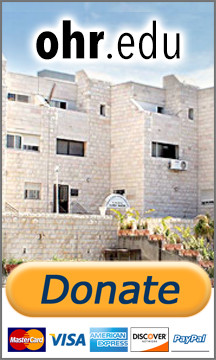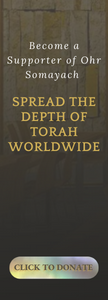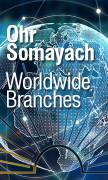Parshat Pinchas
Parsha Overview
Hashem tells Moshe to inform Pinchas that he will receive Hashem’s "covenant of peace" in reward for his bold action — executing Zimri and the Midianite princess Kozbi. Hashem commands Moshe to maintain a state of enmity with the Midianites, who lured the Jewish People into sin. Moshe and Elazar are told to count the Jewish People. The Torah lists the names of the families in each tribe. The total number of males eligible to serve in the army is 601,730. Hashem instructs Moshe how to allot the Land of Israel to the Bnei Yisrael. The number of the Levites' families is recorded. Tzlofchad's daughters file a claim with Moshe.
In the absence of a brother, they request their late father's portion in the Land. Moshe asks Hashem for the ruling, and Hashem tells Moshe that their claim is just. The Torah teaches the laws and priorities which determine the order of inheritance. Hashem tells Moshe that he will ascend a mountain and view the Land that the Jewish People will soon enter, although Moshe himself will not enter it. Moshe asks Hashem to designate the subsequent leader, and Hashem selects Yehoshua bin Nun. Moshe ordains Yehoshua as his successor in the presence of the entire nation. This Torah portion concludes with special teachings of the service in the Beit Hamikdash.
Parsha Insights
Pinchas and the Copper Snake
“Therefore, I (Hashem) say, ‘Behold! I am giving him (Pinchas) My covenant of peace” (25:12)
The name Pinchas is related to the word nechoshet, which means copper. In the Torah, copper connotes resilience, judgment and healing. The altar was made of copper, signifying endurance and the capacity to withstand fire. And its ability to bring spiritual healing through the korbanot, the sacrifices. But the connection goes deeper.
In last week’s Torah portion of Chukat, Hashem brought a plague of fiery serpents (nechashim serafim). Moshe was commanded by Hashem to construct a serpent of copper — a nachash nechoshet — and place it on a pole. Whoever looked upon it would be healed. (Bamidbar 21:9)
Why a serpent? Why copper?
Chazal, in Rosh Hashanah 29a, explain: “Was it the actually the serpent that killed or was it actually the serpent that gave life? Rather, when Israel looked upward and subjugated their hearts to their Father in Heaven, they were healed.” The nachash nechoshet was not a magical cure, but a symbol to direct the heart to spiritual rectification.
Now, enter Pinchas. When Zimri publicly violated the sanctity of Israel, causing a Divine plague to erupt, Pinchas rose up with a spear and halted the sin — just as the nachash nechoshet halted the plague. Both involve symbols of judgment (nachash, nechoshet, a spear). And both lead not to destruction, but to healing.
But here’s the irony: the nachash, the snake, is a Biblical symbol of sin, temptation and death — from the Garden of Eden onward. And yet, Hashem uses this very symbol as a conduit for healing. Likewise, Pinchas’ act, which on the surface is violent and harsh —becomes the source of peace and Divine favor.
This teaches a powerful principle:
"From the wound itself comes the healing."
In our deeper Torah sources, the nachash represents din — strict judgment. But when judgment is wielded by someone l’shem shamayim, as was with Moshe or Pinchas, it becomes sweetened, transformed, into a vessel of rachamim (mercy).
Thus, Pinchas, like the copper snake, channels Divine judgment to restore spiritual order — not for punishment, but for purification.
The Midrash and Zohar go further. Both the snake and Pinchas are agents of paradox. They bring healing through confrontation, peace through zeal, life through death. And because of this, Pinchas becomes Eliyahu, the one who brings ultimate peace; the one who “Returns the hearts of the fathers to the children, and the children to their fathers..." (Malachi 3:24)







